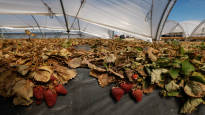The onset of the El Niño phenomenon in the Pacific strongly accelerates global warming. This affects Southern Europe in particular.
The Earth’s climate is predicted to warm faster than before in the next couple of years.
This is because, especially in the Pacific Ocean, the La Niña phenomenon that has prevailed for the last four years is turning into its mirror image, the El Niño phenomenon.
While La Niña cools the Earth’s climate, El Niño warms it. For the past four years, due to human activity, warming gases have continuously entered the climate. Due to La Niña, the average global temperature however, has not reached new records (you switch to another service).
This is because when the La Niña phenomenon is in force, windiness increases. The winds stir the sea surface, causing colder water to rise from the deep layers of the oceans, which warms up on the surface.
During La Niña, the sea therefore binds the heat of the atmosphere.
During the El Niño phase, the windiness decreases and the seawater upwelling decreases. Heat is not transferred to seawater and global warming intensifies.
– There is very warm water on the surface and at the same time the atmosphere is very warm. It is therefore to be expected that this is going to be one of the warmest years again, says a research professor at the Institute of Meteorology Aleksi Nummelin.
Although El Niño is just beginning, the latest measurements show warming sea water.
In the one published in April in extensive research (you switch to another service) it was concluded that the temperature balance of the earth, which describes the thermal balance of the atmosphere and sea water, is one of the most important indicators of climate change.
Hurricanes may become less frequent, but intensify
Climate scientists have pondered the effect of El Niño on tropical storms. The warming of the surface water would give food for an increase in storms. After all, the warming of the water means that a huge amount of energy has been committed to the sea.
However, in El Niño years, significantly more tropical cyclones have not been observed than at other times.
This is because in El Niño conditions the windiness varies in different layers of the atmosphere. This makes it difficult for the vortex typical of tropical cyclones to form, Nummelin explains.
If tropical cyclones, hurricanes or typhoons do develop, they can be exceptionally powerful.
The drought in southern Europe threatens to worsen
Southwest Europe has recently been hit by a severe drought. Italy and the Balkans have also suffered from a lack of water, although in these regions there have also been heavy rains that have raised floods.
EU Environmental Information Centre Copernicus’ long-term weather forecast (you will switch to another service) according to the El Niño phenomenon affects Southern Europe in such a way that the amount of precipitation increases slightly. At the same time, however, temperatures rise sharply, which increases evaporation.
– Even if it rains a little more, the increase in evaporation will negate its benefit, Nummelin estimates.
– For Southern Europe, it will be a really serious matter, how, for example, water supply and plant production are organized, he warns.
More on the subject:
BBC: Recent, rapid ocean warming ahead of El Niño alarms Scientists (you go to another service)
Severe Weather Europe: Unusual Ocean Anomalies are being detected in the North Atlantic (you go to another service)
The Conversation: El Niño is coming, and ocean temps are already at record Highs (you will switch to another service)
